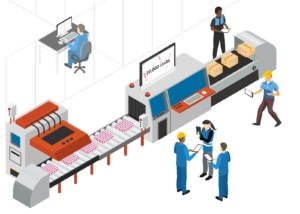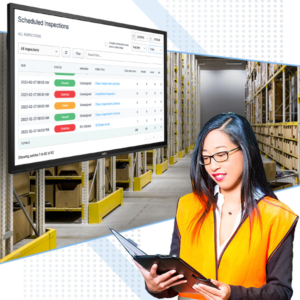Digitization Mavericks
The Inspector is coming. Are you ready?
The CFIA (Canadian Food Inspection Agency), Health Canada and the FDA can audit any facility at any time. Audits can be invasive and a highly disruptive experience – especially if you are not ready. Inspectors have the right to review any staff, procedures, product samples, documents and data in order to assess that (1) you…
Read More4 ways to reduce waste from your Continuous Improvement process
Kaizen is the process of incrementally improving processes by eliminating “waste”. Small improvements over time can have a huge impact on productivity and the bottom line. Waste can come in many forms, including unnecessary inventory, physical movements and scrap. Kaizen only works if everyone is involved, which includes top management and, more importantly, the workers…
Read MoreUSA Food Manufacturing Compliance Requirements
Compliance for manufacturing organizations is comprised of technical, legal and corporate requirements, regulations and practices manufacturers must comply with in order to produce and market products. Numerous areas of compliance can come to bear on manufacturers directly or indirectly, including: Product safety Health, safety, and environmental impact Data protection Export controls Anti-corruption IT safety and…
Read MoreHow to Comply with New OSHA Digitized Reporting Regulations
OSHA (Occupational Safety & Health Administration) is responsible for protecting worker health and safety in the United States. To comply with OSHA requirements employers must document work-related injuries and illness using 3 forms: Form 300 Log of Work-Related Injuries and Illnesses – overview of incidents for a given year. Form 300A Summary of Work-Related Injuries…
Read More3 ways to get operators more involved in maintenance
Creating an autonomous maintenance program is a great way to increase machine up-time and focus on more strategic machine maintenance programs. Getting the operators involved in clean, inspect and lubricate (CIL) maintenance task keeps the line running smoother. Operators learn a bit more about what is “under the hood” of each machine, which makes them…
Read MoreHow to Digitize Construction Site Audits
As a general rule, a supervisor or competent person must inspect a construction site at least once per week to ensure that the site does not reasonably endanger workers. Construction Site Audits include tests and observations necessary for the detection of hazardous conditions. Each region will have its own laws that govern audit requirements and…
Read MoreHow to Digitize Driver’s Vehicle Inspection Reports
Driver’s Vehicle Inspection Reports are necessary and useful, however, they can be missed or “pencil whipped” frequently by staff who want to get out on the road quickly. Staff grumble about vehicle inspections taking too long and managers find out about missed inspections too late. An efficient vehicle inspection program keeps everyone safer and also…
Read MoreFDA Regulated Software Validation Process
FDA requires software vendors to add features to their software to ensure data integrity and audit trails. The manufacturers that use the software for data capture and workflow management relating to FDA compliance are also required to undergo a validation process to ensure the configured software works as intended. What does software validation mean?…
Read MoreThe Effect Of Blockchain Technology In The Manufacturing Industry
Blockchain. That’s been a popular word in recent years, predominantly associated with Bitcoin currency. An initiated few know what blockchain technology is and how it works. Because of its associations with Bitcoin and the media exposure therefrom, people have been making their own assumptions that have been largely tethered to banking, currency, and global markets. We’re…
Read MoreWhat is Lean Manufacturing?
In short, lean manufacturing is a continuous improvement philosophy promoting system-wide efficiency. Indeed, this system values balanced productivity that harmonizes across the entire value chain. If a particular line is more productive than the other parts in the value chain, it does not benefit the efficiency of production. Therefore, lean manufacturing principles adjust for overall…
Read More







